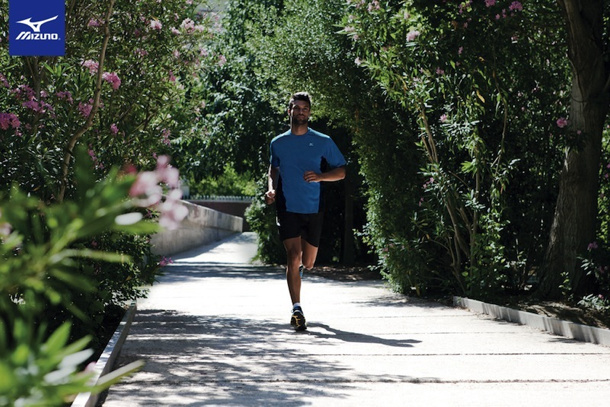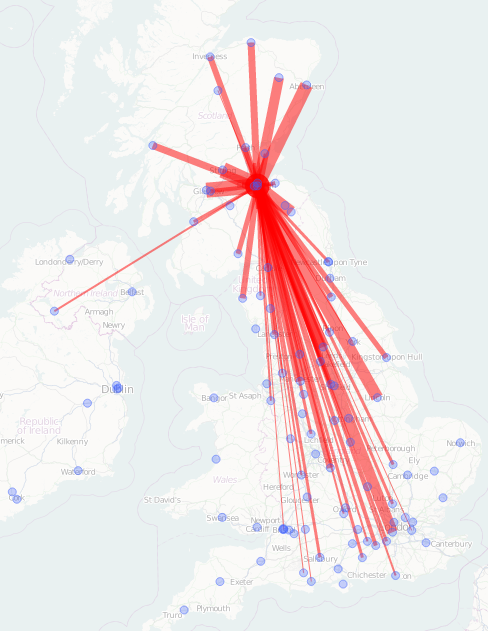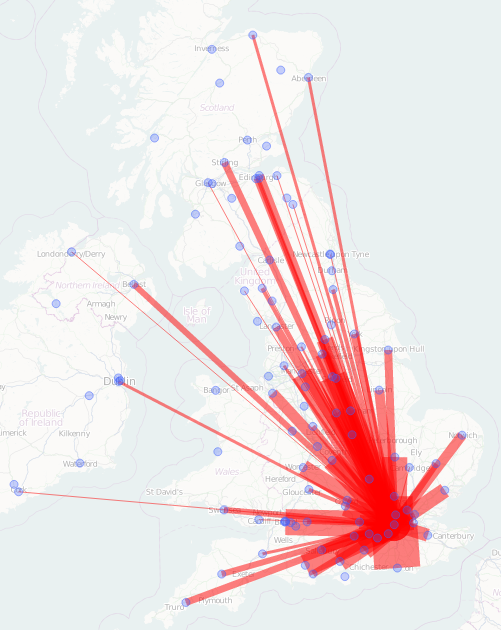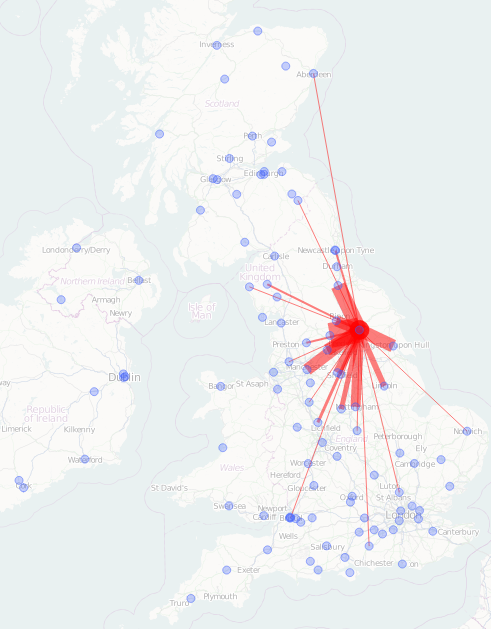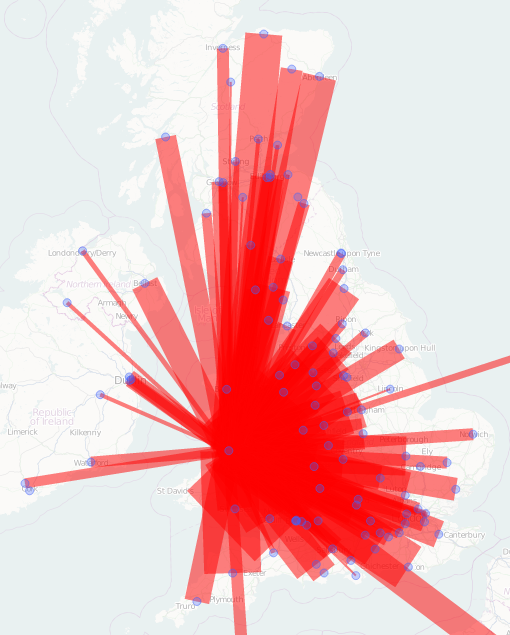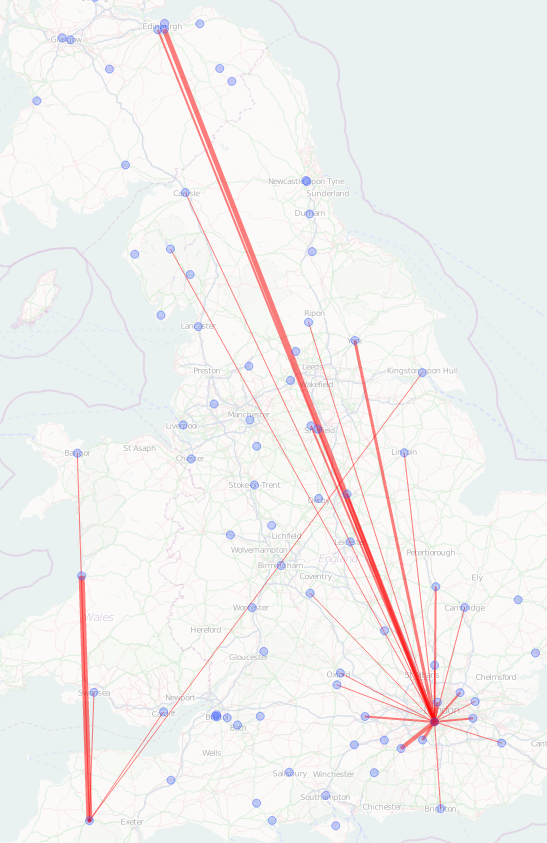
I was prompted by the excellent Twitter Tongues map, where geolocated tweets in London (including mine, and those from hundreds of thousands of others) were mined by Ed Manley over the summer, and then mapped by James Cheshire, to see where I had left my own Twitter footprint.
Many people would probably be quite alarmed to learn that the data, on the exact locations they have tweeted at – if they’ve allowed geolocation – is freely accessible to anyone, not just themselves, through the Twitter API.

It’s a bit of a faff to get the data – Twitter is starting to rollout a “download my Tweets” option which may make the first few steps here easier – but here’s how I did it.
- I used the user_timeline call on the Twitter API, repeatedly, to pull in my last 3200 tweets (the maximum) in batches (“pages”) of 200. The current Twitter API (1.1) requires OAuth authentication – not of the person whose tweets you are mining, but simply yourself, so that rate limits can be correctly applied. Registering a dummy application on the Twitter gives access to OAuth credentials, and then using the OAuth tool generates a CURL string that can then be run – the result is put in a file (
> pageX.json), and I do this 16 times to get all 3200 tweets, using thecount,pageandinclude_rtsparameters. For this particular case, I’m interested in the locations of my own account but – to stress again – you can do this for anyone else’s account, unless their account is protected and you are not a follower. - The output is as various JSON files. Lacking a JSON parser, or indeed the skill, I had to do a bit of manual text processing. Those with a flexible JSON parser can therefore skip a few steps. I then merged together the files (
cat *.json > combined.txt), and in a text editor, put a line break between each},{"creaand replaced,"with,^"with the caret being an otherwise unused character. - I opened up the file as a text file (not CSV!) in Excel and did a text-to-column on the caret. I then extracted three columns – the date/time, tweet text, and the first coordinates column that occurred. These were the 1st(A), 4th (D) and 28th (AB) columns. I did further find/replace and text-to-columns to remove the keys and quotes, and split the coordinates column into two columns – lat and long.
- I removed all the rows that didn’t have a lat/long location. Out of 3186 (14 less than 3200 due to deleted tweets) I had 268 such tweets. I also added a header row.
- I created a new Google Fusion Table on the Google Drive website, importing in the Excel file from the above step, and assigning the latter two columns to be a two-column location field.
- I marked the table as public (viewable with a link). This is necessary as Google doesn’t allow the creation of a map from a private file, except though a paid (business) account. The flip side of course is this gives Google themselves the right of access to the file contents, although I can’t imagine they are particularly interested in this one.
- Finally, I added a tab to the Google Fusion Table which was a map tab, and then zoomed in and around and took the screenshots below. The map is zoomable and the points clickable as normal. It should be possible to colour-code the dots by year, if the categories are set appropriately and the appropriate part of the datetime feed is reformatted appropriately in Step 3.
The whole process, including some trial-and-error, took a little over an hour – not so bad.
In the images above and below, you can see the results – 268 geolocated tweets over the course of two and a half years from my account – many of them precisely and accurately located.

All screenshots from Google Maps.

